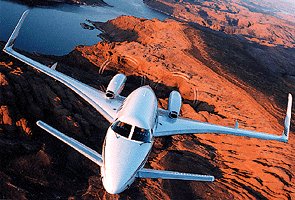
Not all airplanes have a traditional wing configuration consisting of a single horizontal wing around the middle of the fuselage. There are alternative wing configurations available, one of which is a canard. Canards are commonly found on military jets. Some private and experimental airplanes, however, feature a canard as well.
Canards Explained
A canard is an alternative wing configuration that involves the use of a secondary, small wing in front of the airplane’s main horizontal wing.
The term “canard” is typically used to describe this secondary, small wing. It’s essentially a forewing. Airplanes with a canard have a main horizontal wing around the middle of their fuselage, but they also have a smaller, secondary wing. Known as a canard, this secondary wing is located closer to the cockpit.
Canard Characteristics
While available in different styles, most canards share some common characteristics. As previously mentioned, canards are smaller than main horizontal wings. They are often just one-quarter or one-fifth the size of the main horizontal wings.
Another common characteristic of canards is the placement. Canards are always located in front of the main horizontal wings. On many airplanes, the canard is either directly in front of the cockpit or right behind the cockpit.
Origins of Canards
The origins of the modern-day canard can be traced back to the Wright Brothers. Around the turn of the 20th century, Orville Wright and Wilbur Wright developed a kite with a forewing. The Wright Brothers later used this same wing configuration for their Flyer. As the aerospace industry blossomed in the years to follow, other manufacturers began using a canard.
Why Airplanes Have a Canard
You might be wondering why airplanes have a canard. Canards serve several purposes. Like the main horizontal wing on an airplane, for instance, the canard produces lift. Air will travel over and under the canard. The pressure difference between the canard’s top and bottom surfaces will produce lift.
Canards are also used for pitch control. Pilots can adjust the airplane’s angle of incidence, thereby controlling the pitch.
A canard can lower the risk of stalls as well. Stalling occurs when an airplane fails to produce a sufficient amount of lift. It’s often the result of a high angle of attack. If an airplane’s angle of attack is too high, the air moving over its wings may become disrupted. As a result, the airplane will experience a loss of lift.



